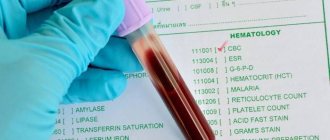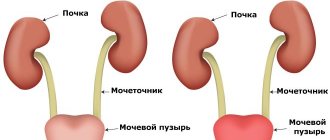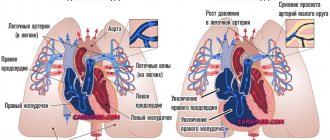The resistance of erythrocytes is understood as their resistance to various destructive factors: mechanical, thermal and others. Of particular importance in laboratory studies is the osmotic resistance of erythrocytes, that is, resistance to hypotonic NaCl solutions of different concentrations. A special test is used to determine at what concentration of sodium chloride the breakdown of red blood cells (hemolysis) begins.
For normal functioning, red blood cells must resist osmotic pressure, that is, they must be strong. The ability to resist is called osmotic resistance, or resistance. If red cells become weak, the immune system marks them as waste material and removes them from the body.
Maximum and minimum resistance are distinguished. The maximum corresponds to the concentration of a hypotonic NaCl solution, at which hemolysis of all red cells occurs within 3 hours. The minimum is determined by the concentration of the solution at which the least resistant red blood cells are destroyed.
What is ORE
REM is the resistance of red blood cells to destructive factors: high or low temperature, chemicals, and mechanical stress. Typically, laboratory experiments reveal the resistance of red blood cells to sodium chloride (NaCl). During the experiments, it is important to find out what concentration of this chemical causes the destruction of red blood cells. This helps to identify the resistance of blood cell membranes to pressure and the chemical effects of a saline solution (osmosis). Normal red blood cells can resist. They remain strong and their shells remain intact. This is called the osmotic resistance of red blood cells.
The immune system is able to identify blood cells that are weak and cannot resist attack. Over time, these red blood cells leave the body.
How does red blood cell aggregation occur?
The simplest aggregation of red blood cells can be seen under a conventional microscope, when there is a small drop of blood on a glass slide. It gradually forms glued columns, “packs” of red blood cells, which are called coin columns.
The density of these columns gradually increases, and then it is no longer visible that they are glued together from individual red blood cells. They represent a solid conglomerate. This phenomenon is called homogenization in the laboratory.
Fortunately, this process is completely reversible, and in the body, erythrocyte sludge (this is the name given to similar structures) can disintegrate into individual cells.
The important clinical significance of red blood cell aggregation is that these clots of individual cells disrupt capillary blood flow because they impair the fluidity of the blood, or its rheological properties. In large vessels, such as the aorta, subclavian artery, and large vessels of the liver, erythrocyte aggregation is invisible.
But in small capillaries it can no longer be ignored. This phenomenon can develop quickly and strongly throughout the entire body, which is observed in some diseases.
In the event that aggregation of red blood cells occurs due to some toxin, acute infection, for example, malaria, lobar pneumonia, or various shocks, then a serious obstacle to microcirculation occurs throughout the body. Blood flows very poorly from small arteries into the capillary system.
In addition, aggregation, if it occurs inside small capillaries, has a very bad effect on gas exchange in tissues. There is the science of pathophysiology, which studies typical pathophysiological processes that damage various structures of the body. From the point of view of this science, the limit of harm is the complete stop of capillary blood flow, or stasis.
As a result, severe metabolic and tissue acidosis occurs, or an increase in blood acidity occurs. This condition requires treatment, but in this case it is not cardiac aspirin that is used, but specific therapy aimed at removing toxins from the human body, intensive therapy aimed at restoring capillary blood flow and microcirculatory function. The most common causes of red blood cell aggregation are:
- a hemodynamic factor that determines the behavior of red blood cells in the blood flow.
This factor is significantly influenced by the concentration of red blood cells. It is clear that if the patient is dehydrated, then the red blood cells are close to each other, and their aggregation will certainly occur,
- the second factor is plasma.
This factor determines the state of the blood plasma and the presence of various substances in it that help red blood cells approach or repel. Taking aspirin will be the plasma disaggregation factor. Its molecules, being in the blood plasma, prevent red blood cells from coming together and sticking together.
Finally, the third factor is electrostatic. This is nothing more than the ordinary forces of Coulomb attraction of unlike charges. This factor also helps the red blood cells clump together and become sticky.
How to study the ORE
To determine the osmotic resistance of red blood cells, observations are made of the reaction of blood and sodium chloride solution. These ingredients are mixed in equal proportions.
If the concentration of a sodium chloride solution is 0.85%, then it is called isotonic (or saline). At a lower salt content, the chemical is called hypotonic, and at a higher salt content, it is called hypertonic. In an isotonic solution, red blood cells are not destroyed, in a hypotonic solution they swell and disintegrate, and in a hypertonic solution they shrink and die.
What is saline solution?
Saline solution is distilled water with table salt dissolved in it. A saline solution with a concentration of 0.85 percent is called isotonic. There is no destruction of red blood cells in it.
If the salt concentration is lower, the solution is called hypotonic, if higher, it is called hypertonic. When placed in such solutions, red blood cells begin to break down. In hypertonic, or hyperosmotic, they lose water and shrink. When hypotonic, or hypoosmotic, they absorb water and swell.
How the analysis is carried out
The method for determining the osmotic resistance of erythrocytes involves the use of hypotonic solutions with a concentration of 0.22 to 0.7%. The same amount of blood is placed in them. This mixture is kept for about an hour at room temperature and then processed in a centrifuge. At the same time, observe the color of the liquid. At the beginning of the process of breakdown of red blood cells, the mixture becomes slightly pink, and when the blood cells are completely destroyed, it turns red.
Thus, when determining the osmotic resistance of erythrocytes, 2 indicators are obtained: minimum and maximum.
Osmotic resistance of red blood cells
Osmotic resistance of erythrocytes is an indicator of the resistance of erythrocytes to osmotic pressure. The durability of CCT is determined only through diagnostic measures. Exceeding or lowering the norm will indicate the development of a certain pathological process, and therefore the indicator should always be monitored.
The osmotic resistance of erythrocytes has its minimum and maximum values:
- maximum - exposure to a hypotonic sodium chloride solution, when hemolysis of absolutely all cells occurs within three hours;
- minimum - exposure to a substance of a different concentration, at which only minimally resistant cells are destroyed.
It should be noted that the osmotic resistance of red blood cells will depend on their age. Young CCPs have the greatest stability as they are the flattest.
Determination of osmotic resistance of erythrocytes is carried out as follows:
- several glass tubes are used into which sodium chloride solution of different concentrations is poured - most often from 0.7 to 22%;
- blood samples are added to the test tubes with the solution, but only in the same quantity;
- samples are placed at room temperature for 60 minutes;
- at the end of the period, the tubes with samples are centrifuged;
- the color of the liquid obtained after this will indicate the indicators of the osmotic resistance of red blood cells.
If the color of the liquid is pink, this indicates a minimum concentration, but a bright red color will indicate a maximum. The norm for spherical resistance of an erythrocyte is 0.32–0.44 percent sodium chloride solution.
Osmotic resistance of red blood cells
The norm for an adult is as follows:
- maximum stability - norm 0.32–0.34%;
- the minimum osmotic resistance of erythrocytes is 0.46–0.48%.
If the norm is not met, that is, the indicators are higher or lower, this may indicate the development of a certain pathological process in the body. Even a slight deviation from the norm can indicate quite severe pathological processes in the body, so osmotic pressure must be monitored.
The normal indicators may be violated due to certain diseases, both acute and chronic. Maximum resistance rates can be observed in the following cases:
- atherosclerosis;
- malignant neoplasms in the gastrointestinal tract;
- thalassemia;
- polycythemia, but only in some cases;
- splenectomy;
- hemoglobinopathy;
- hemoglobinosis;
- congestive jaundice;
- congenital blood diseases;
- systemic and autoimmune pathologies.
Minimal osmotic resistance may be a consequence of the following pathological processes:
- Iron-deficiency anemia;
- hemolytic anemia in newborns;
- heavy metal poisoning;
- extensive intoxication of the body;
- hereditary form of hemolytic anemia.
A slight deviation from the norm may be due to the following diseases:
- leukemia;
- cirrhosis of the liver;
- tuberculosis.
Predisposing factors for reducing the stability of CCP:
- the production of spherical red blood cells is a genetic deviation;
- completion of the life cycle of the CCP, which leads to a spherical shape;
- cardiovascular diseases.
Determining what exactly led to such a violation can only be done through diagnostic measures. The reason for starting the examination will be the corresponding clinical picture.
The clinical picture will be general. There are no specific symptoms that will be characteristic only of a deviation from the norm of CCT resistance.
The following symptoms may be present:
- pale skin;
- weight loss for no apparent reason;
- increased fatigue and increasing weakness, which will be more like chronic fatigue syndrome;
- poor appetite;
- drowsiness;
- exacerbation of chronic diseases.
If there is a clinical picture, you should consult a doctor. Initially, this is a general practitioner, that is, a therapist. Further examination is carried out by a hematologist and related specialists.
If it is determined diagnostically that the indicators are lower or higher than acceptable, it is imperative to undergo treatment, since most of the etiological factors pose a danger not only to the health, but also to the life of the patient.
Treatment will be entirely based on the underlying pathology. Therapeutic measures can be either conservative or radical. The forecast is purely individual.
Resistance rate
The norm of the BRE indicator does not depend on the age and gender of the patient. A slight decrease in this value is observed in older people, and an increase in children under 2 years of age.
The norm for osmotic resistance of erythrocytes is considered to be the maximum value - from 0.32 to 0.34% and the minimum - from 0.46 to 0.48%.
This means that normal red blood cells exhibit the greatest stability in a solution with a concentration of 0.32 - 0.34%, and the least in 0.43 - 0.48%.
Osmotic resistance of erythrocytes: what is it and what are its norms?
An analysis for the osmotic resistance of erythrocytes is almost never prescribed by a doctor - therapist, cardiologist, gastroenterologist. But a hematologist, who diagnoses and treats blood diseases, writes the Patient a referral for this test quite often. What kind of research is this? Why is it carried out, and what values are determined in a healthy person?
To find out, we should remember what red blood cells are, what resistance is, and how it relates to osmosis. First of all, we should replace the beautiful word “resistance” with its synonym: sustainability. Therefore, we will talk about the phenomenon of osmotic stability of erythrocytes.
Reasons for rejection
In some cases, the BER may be higher or lower than normal. Increased stability of red blood cell membranes is observed in hemolytic jaundice. In this case, bilirubin increases, and cholesterol is deposited on the membranes of red blood cells. An increase in BER also occurs with abnormalities of the erythrocyte membrane (spherocytosis) and with a violation of the structure of hemoglobin (hemoglobinopathies).
A decrease in the osmotic resistance of erythrocytes occurs in the following cases:
- Blood diseases, removal of the spleen, massive blood loss.
- Cardiovascular pathologies. At the same time, red blood cells are shaped like a sphere and have poor resistance to external influences.
- Genetic abnormalities in which the red blood cells are spherical in shape. Such altered cells have low resistance.
- A large number of old red blood cells, with high membrane permeability. This may be due to kidney disease. It is this organ that is responsible for removing old blood cells from the body.
However, it must be remembered that with some types of anemia, the TRE indicator may remain normal. For example, if the activity of the red blood cell enzyme (G-6-FDG) is insufficient, the test result will be within acceptable limits. But at the same time, the patient exhibits all the signs of anemia.
Causes of changes in BER and characteristic symptoms
The condition of erythrocyte membranes and their resistance directly depends on the nature of the disease or hereditary pathology:
- the reason for the increase in the resistance of cell walls may be obstructive jaundice, stomacytosis, hereditary or acquired spherocytosis, types of hemoglobinosis;
- thinning of membranes and oversaturation of the blood with immature forms of erythrocytes occurs after large blood loss, and is also characteristic of oncohematological diseases, hemoglobinopathies, iron deficiency anemia, and immunosecreting tumors.
Some cardiovascular diseases contribute to the saturation of the blood with flattened forms of red blood cells with a low sphericity index, and certain types of hereditary pathologies - with excessively spherical shapes. Such cell changes have equally poor resistance.
The following set of hemolytic signs indicates an excess amount of bilirubin and insufficient oxygen supply to tissues, caused by a reduced concentration of healthy forms of red blood cells:
- apathy, general loss of strength, fatigue;
- absolute lack of appetite, weight loss;
- increase in body temperature (including up to limit values);
- irresistible drowsiness;
- pallor or slight yellowness in visible areas of the skin.
Normal limits
During the study, the boundaries of osmotic resistance of erythrocytes are determined. Exceeding or decreasing these indicators may indicate pathology.
The upper limit of the BER is normally no more than 0.32%. If resistance becomes less than this indicator, this may indicate the following pathologies:
- hemoglobinopathy;
- congestive jaundice;
- surgery to remove the spleen;
- thalassemia;
- polycythemia;
- severe blood loss.
If the lower limit of osmotic resistance of erythrocytes becomes more than 0.48%, then this may occur with different types of hemolytic anemia and after poisoning with lead compounds.
With some types of blood pathologies, the boundaries of the RSE may expand. This happens with anemia associated with vitamin B12 deficiency and the destruction of red blood cells during an acute hemolytic crisis.
Reasons for changes in indicators
An increase in osmotic resistance (maximum resistance less than 0.32%) occurs with the following pathologies:
- Massive blood loss (more than 5% of blood volume), since the number of young red blood cells in the blood increases as a compensatory mechanism, but in conditions of resource scarcity. As a result, a large number of cells with insufficiently strong membranes are formed.
- Atherosclerosis: cholesterol derivatives can be deposited on the red blood cell membrane, which leads to a change in its properties.
- Obstructive jaundice, its causes: blockage of the bile ducts due to the formation of gallstones, gallbladder disease and some liver diseases.
- Hereditary anemias associated with changes in the structure of hemoglobin (hemoglobinopathies): thalassemia, sickle cell anemia.
- Hereditary diseases that result in changes in the structure of the erythrocyte membrane (membranopathy).
- Condition after removal of the spleen.
- Polycythemia vera is an excessive increase in the number of blood cells due to a tumor in the hematopoietic organs.
- Cancer of the gastrointestinal tract.
A decrease in osmotic resistance (the minimum becomes higher than 0.48%) may be associated with:
- Lead poisoning and its derivatives.
- Hemolytic anemia, in which massive hemolysis of red blood cells occurs. The causes are various: autoimmune, hereditary diseases, hemolytic jaundice of newborns and others.
- A slight decrease is possible due to tuberculosis, heart failure, leukemia (blood cancer), cirrhosis of the liver.
Shape and maturity of red blood cells
The osmotic resistance of erythrocytes depends on the shape of these cells. Resistance is significantly lower in red blood cells that have a pronounced spherical or spherical shape. Such cells are very susceptible to destruction under the influence of various factors. The shape of red blood cells can be hereditary or a consequence of their aging.
The stability of red blood cells is also affected by their age. The highest resistance is detected in young cells that have a flat shape.
Signs of violation of the ORE
If there are deviations in the analysis of the RSE, the well-being of patients always changes. Patients complain of the following symptoms:
- fatigue;
- general loss of strength;
- drowsiness, constant desire to lie down;
- pale skin;
- loss of appetite;
- causeless increase in temperature;
- weight loss
Such manifestations are the result of oxygen starvation of tissues. Usually, if there are deviations in the BRE analysis, the doctor prescribes additional studies to clarify the cause of the pathology. If the disorders are not a consequence of a genetic disease, then after a course of therapy the red blood cells return to normal.
For disorders of erythrocyte resistance, patients are prescribed corticosteroid hormones, vitamins (folic acid), and medications containing iron. In severe cases, with frequent exacerbations of the disease, surgery is performed to remove the spleen.
Specific prevention of disorders of erythrocyte resistance has not been developed. Many types of such deviations are hereditary. Such patients require consultation with a geneticist so that patients do not pass the pathology on to their children. Preventive measures are also needed to prevent the development of a hemolytic crisis. Patients need to be provided with conditions for good hematopoiesis. It is necessary to take vitamins and medications to prevent anemia, as well as a diet with sufficient iron content. This will help avoid exacerbation of hemolytic manifestations, and in some cases, improve the results of the analysis of the BRE.











